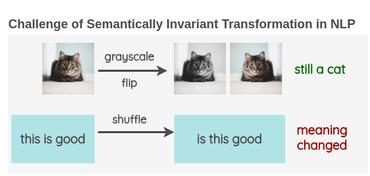Data Augmentation
2517 papers with code • 2 benchmarks • 63 datasets
Data augmentation involves techniques used for increasing the amount of data, based on different modifications, to expand the amount of examples in the original dataset. Data augmentation not only helps to grow the dataset but it also increases the diversity of the dataset. When training machine learning models, data augmentation acts as a regularizer and helps to avoid overfitting.
Data augmentation techniques have been found useful in domains like NLP and computer vision. In computer vision, transformations like cropping, flipping, and rotation are used. In NLP, data augmentation techniques can include swapping, deletion, random insertion, among others.
Further readings:
- A Survey of Data Augmentation Approaches for NLP
- A survey on Image Data Augmentation for Deep Learning
( Image credit: Albumentations )
Libraries
Use these libraries to find Data Augmentation models and implementationsMost implemented papers
YOLOv4: Optimal Speed and Accuracy of Object Detection
There are a huge number of features which are said to improve Convolutional Neural Network (CNN) accuracy.
Improved Baselines with Momentum Contrastive Learning
Contrastive unsupervised learning has recently shown encouraging progress, e. g., in Momentum Contrast (MoCo) and SimCLR.
AutoAugment: Learning Augmentation Policies from Data
In our implementation, we have designed a search space where a policy consists of many sub-policies, one of which is randomly chosen for each image in each mini-batch.
SpecAugment: A Simple Data Augmentation Method for Automatic Speech Recognition
On LibriSpeech, we achieve 6. 8% WER on test-other without the use of a language model, and 5. 8% WER with shallow fusion with a language model.
3D U-Net: Learning Dense Volumetric Segmentation from Sparse Annotation
This paper introduces a network for volumetric segmentation that learns from sparsely annotated volumetric images.
Improved Regularization of Convolutional Neural Networks with Cutout
Convolutional neural networks are capable of learning powerful representational spaces, which are necessary for tackling complex learning tasks.
Supervised Contrastive Learning
Contrastive learning applied to self-supervised representation learning has seen a resurgence in recent years, leading to state of the art performance in the unsupervised training of deep image models.
SimCSE: Simple Contrastive Learning of Sentence Embeddings
This paper presents SimCSE, a simple contrastive learning framework that greatly advances state-of-the-art sentence embeddings.
Unsupervised Data Augmentation for Consistency Training
In this work, we present a new perspective on how to effectively noise unlabeled examples and argue that the quality of noising, specifically those produced by advanced data augmentation methods, plays a crucial role in semi-supervised learning.
EfficientNetV2: Smaller Models and Faster Training
By pretraining on the same ImageNet21k, our EfficientNetV2 achieves 87. 3% top-1 accuracy on ImageNet ILSVRC2012, outperforming the recent ViT by 2. 0% accuracy while training 5x-11x faster using the same computing resources.



 CIFAR-10
CIFAR-10
 ImageNet
ImageNet
 ESC-50
ESC-50
 ImageNet-Sketch
ImageNet-Sketch
 MuST-C
MuST-C
 IAM
IAM
 PAWS
PAWS
 Clotho
Clotho
 UrbanSound8K
UrbanSound8K
 MathQA
MathQA


